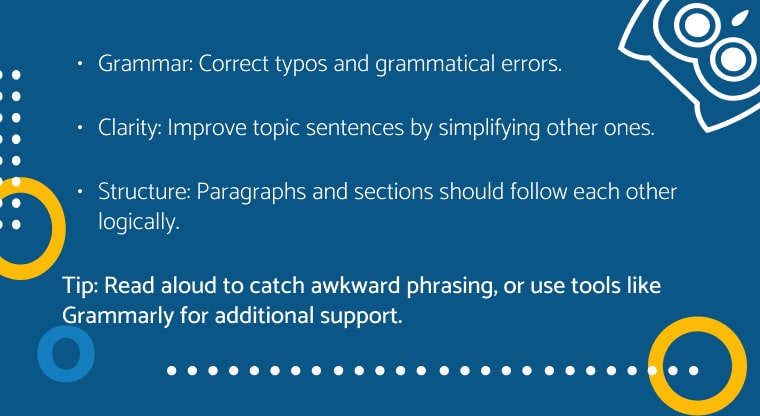How to Write a Research Paper: Student’s Practical Guide
Table of contents
Lost in the maze of academic research, unsure where to begin or how to craft a stand-out paper? This article is your ultimate guide to writing a professional research paper, breaking down the process into easy-to-follow steps. Whether tackling college courses or working on critical reviews, we’ll walk you through everything from choosing a strong thesis statement to citing sources properly.
By the end, you’ll know how to structure an entire research paper, refine sentence structure, and avoid common pitfalls like grammatical and spelling errors.
What Is a Research Paper?
Starting your academic writing journey can be daunting if you don’t fully grasp what an academic research paper entails. Think of it as an in-depth investigation where you uncover and organize background information on a topic, much like a detective piecing together clues to solve a case. A well-crafted paper allows you to:
- Conduct preliminary research to understand the topic better.
- Present a research question and explore answers systematically.
- Organize your findings in a logical sequence.
- Gather supporting evidence from credible sources like Google Scholar or academic databases.
Unlike assignments that emphasize personal opinions or firsthand accounts, a research paper combines your own research with secondary sources to build a strong argument. The key elements include a clear thesis statement, flow, and proper grammar to communicate your findings effectively. It’s not just about stating your perspective — it’s about backing it up with expert insights and evidence.
Real-world examples help clarify the structure. For instance, when studying climate change, your work might analyze how global policies impact carbon emissions. A strong approach would involve using a search engine to locate sources, gathering background information, and framing a clear research question to guide your analysis.
Citing page numbers and maintaining the correct format, including a separate cover page, ensures a professional presentation.
By mastering these essentials, you will create compelling, evidence-based academic papers that reflect your insights and contribute to your field of study. If you need guidance along the way, research paper help can support you in gathering information, evidence, and facts from various sources to understand and explain something.
Many students start their academic writing journey without fully understanding what a research paper entails. Simply put, a research paper is an information-packed investigation where you explore a topic in depth. It is like a detective piecing together clues. A research paper can help you:
- Organize relevant information.
- Gather supporting evidence from academic databases and published articles.
- Present a central idea with a logical flow.
What sets a research paper apart from other assignments is how it uses research sources. Unlike essays that often focus on personal thoughts or feelings, a research paper combines your ideas with secondary sources to build and support a paper’s argument. The key is not just to state your opinion but to back it up with expert evidence.
Mastering the structure of a research paper means mixing a good thesis statement, logical organization, and relevant information! You create a strong foundation for your work and set an example for future students on how to craft compelling, evidence-based academic papers.
Research Paper Writing Steps
Research paper writing can be an exciting journey, much like any adventure. Just like any trip, it is essential to have a roadmap to guide you through the process.
Without the roadmap, you will sail aimlessly in a vast sea of information without a caption. So, here are the steps you must follow to write research paper that impress your readers!
Understanding the Assignment
Imagine you are planning a road trip. Before you hit the road, you will want to know where you are headed, right? Similarly, when you start the research paper writing process, it is crucial to understand the scope of your journey and know basic expectations, like what a 500-word essay looks like.
So, it is just like setting your GPS destination. It will help you stay on track, avoid getting lost, and reach your destination efficiently and timely.
Moreover, it will keep you focused, save you time searching for information, and clarify the purpose of your work!
Importance of a Particular Topic
Your research paper topic is the foundation of your work, much like the main ingredient in a recipe. A good topic for a research paper keeps your writing focused and ensures a smooth research process. Choosing something that genuinely interests you, like exploring essay ideas, makes the experience more engaging and less burdensome.
Start broad and narrow it down to clearly understand what you will cover in your research. Find your perfect topic sentence.
For instance, refine “Impact of Technology” to “Impact of Smartphones on Teenagers’ Social Lives.” Ensure there’s enough research potential by checking academic databases and published articles before committing to your work.
A well-chosen topic makes your paper cohesive and gives readers a clear idea of what to expect.
Conduct Preliminary Research
Once you have your topic, start gathering reliable sources — like selecting the finest ingredients for a cake:

With solid research and a clear system, you’ll lay a strong foundation for a smooth writing process.
Formulate a Thesis Statement
Now that you have done your research and are starting to gather your thoughts, it is time to create the heart of your paper ─ the thesis statement. You might be wondering what exactly thesis statements are. They are like the main points or core ideas of your research papers. A sentence that tells your readers what your paper is about and your stance.
While formulating a thesis statement for your paper, keep it specific, arguable, concise, and connected to your research. Also, remembering that your thesis is not set in stone is worth remembering. As you continue to research and write, you can refine it to understand your topic better and ace your topic sentence.
Create a Research Paper Outline
Think of your outline phase as the blueprint of your research paper. Just as architects use blueprints to guide construction, your outline organizes ideas to ensure a logical flow.
Well, think of creating a research paper outline as a blueprint for your paper. It will help you organize your thoughts and ensure your paper flows thoroughly:
- Title: The first page of the paper shows the title of the research paper and the author’s name. It also shows affiliations, acknowledgments, and other specific information relevant to the paper.
- Abstract: Next comes the abstract ─ a concise summary of the paper that includes the main problem, the research paper question, the study’s goal, the methods implemented, the findings, and the study’s contributions.
- Introduction: The introductory paragraph overviews the key points and technical arguments your paper will explore. The best research paper introduction section offers a concise presentation of your central topic while summarizing the existing state of research.
- Literature Review: A good literature review in a paper gives a wider view of the study and its language.
- Methodology: The methods section explains how the study was done, including the plan, who was involved, what materials were used, the steps taken, and how the data was analyzed.
- Results: The results section shares the study’s main findings through visuals like figures and
- Discussion: The discussion section interprets the study’s results, explains how they relate to the research question and prior studies, mentions study limitations, and suggests implications or recommendations for future research or practice.
- Conclusion: The effective research paper conclusion sums up the main points, restates the research questions, and highlights key points without unnecessary words and repetition.
- References: The annotated bibliography summarizes all used materials, while the references section lists only cited sources in a specific citation style (like APA or MLA).
- Appendices: Appendices should include supplementary materials such as charts, statistics, and efficient mathematical solutions and formulas that enhance understanding.
Writing a First Draft
Once you have gathered your research and created an outline, it is time to dive into the exciting process of writing your first draft. It might not be perfect, but it is the starting point for something great. Now, one thing you must remember while writing your paper’s first draft is the target audience.
Take a little time to understand your paper’s target audience. Who are you writing for? Is it experts in your field, classmates, or a general audience? Knowing your target audience before writing your first draft will help you choose the right tone and language for your message.
Just like you would not use complicated jargon when talking to the senior members of your family about technology, you will have to tailor your writing to your target audience’s level of understanding.
Also, when writing the first draft of your research paper, do not worry too much about perfection. It is more like building the framework of your paper. You can refine and polish it in later drafts. Just let your ideas flow, and consider examples of a hook in an essay to effectively capture their interest from the outset.!
Proofreading for Grammar, Syntax, and Structure Errors
Carefully review your paper for:

Moreover, you can use spell-check and grammar-check tools to catch common mistakes. However, do not rely on them entirely, as they often miss context-specific errors. When proofreading your final draft, concentrate on one type of error at a time.
For example, look for grammar errors first, then syntax and structure errors. It will make the proofreading process more manageable and efficient.
Remember, proofreading is like giving your paper the last layer of polish. Therefore, take your time, be patient, and give your paper the finishing touch it deserves. Your readers will be thankful for it!
Citing Sources
Using information or ideas from other sources is like borrowing pieces from someone else’s puzzle to complete yours. Citing credible sources is crucial as it shows you have done your homework and gives credit to the original creators of the ideas or information you are using.
Now, different citation styles are like different languages for your citations. Each style has its formatting style, but they all serve the same purpose ─ making your sources clear and accessible.
Two formatting styles considered the most used for academic research papers are APA and MLA. Still, there is much more to explore:
- APA (American Psychological Association):is often used in social sciences and psychology. APA Style typically includes the author’s name and publication year in parentheses, like (Smith, 2023).
- MLA (Modern Language Association)is commonly used in the humanities. In an MLA, you usually include the author’s name and page number (Smith 45).
- Chicago Style:is used in history and other fields. It has two main styles: notes and bibliography (used for citations within the text) and author-date (used in the sciences).
- IEEE (Institute of Electrical and Electronics Engineers):is often used in engineering and computer science. It uses numbers in square brackets, like [1].
Each style has its unique rules and formatting guidelines. For instance, the position of quotation marks depends on different styles. Therefore, choose the style that fits your field and adheres to your professor’s or institute’s guidelines.
However, there is no need to spend your precious time memorizing all the rules and formatting guidelines for each style. If you struggle with it, you can use free citation generators to ease your life!
Creating a Bibliography or Works Cited Page
Creating a bibliography or references list for your research paper is like giving credit where it is due. It is essential to list all the sources you have used, like books or websites, following a specific citation style (APA, MLA, etc.).
Organize the research paper’s citations alphabetically by the author’s last name and use hanging indents. It should be placed on a separate page of your research. This clear and organized reference list adds credibility to your paper and helps readers explore your sources faster.
3 Tips on How to Write a Research Paper Fast
- Write in Sprints and Set Realistic Goals:Break your writing process into manageable chunks. Set aside specific blocks of time, like 30 minutes to an hour, and commit to focused writing during those periods.
- Revise and Edit Later: Do not obsess over perfection during your initial draft. Focus on getting your ideas down on paper. You can fine-tune and polish your writing while reviewing and editing your paper. Trying to write perfectly from the start can slow you down.
- Use Writing Tools: Take advantage of writing tools and software to help you stay organized and improve your writing! Services like write me an essay, spell checkers, and citation generators can save you time and reduce the chances of errors.
Final Thoughts on Your Journey to Research Paper Success
This step-by-step research paper guide has shown you how to write a successful research paper that meets the requirements and is good.
We’ve covered understanding your scope, picking interesting topics, doing research, making strong thesis statements, and organizing your ideas according to the format for the research paper. We’ve also talked about writing with your readers in mind, checking for mistakes, and crediting your sources.
With these tips, you’re ready to start your research paper journey. Remember, it’s not just about finishing; it’s about what you learn and share as you go. Happy writing!
In conclusion, focusing on the potential impact and outcome of your research can significantly reduce the daunting nature of the writing process.







